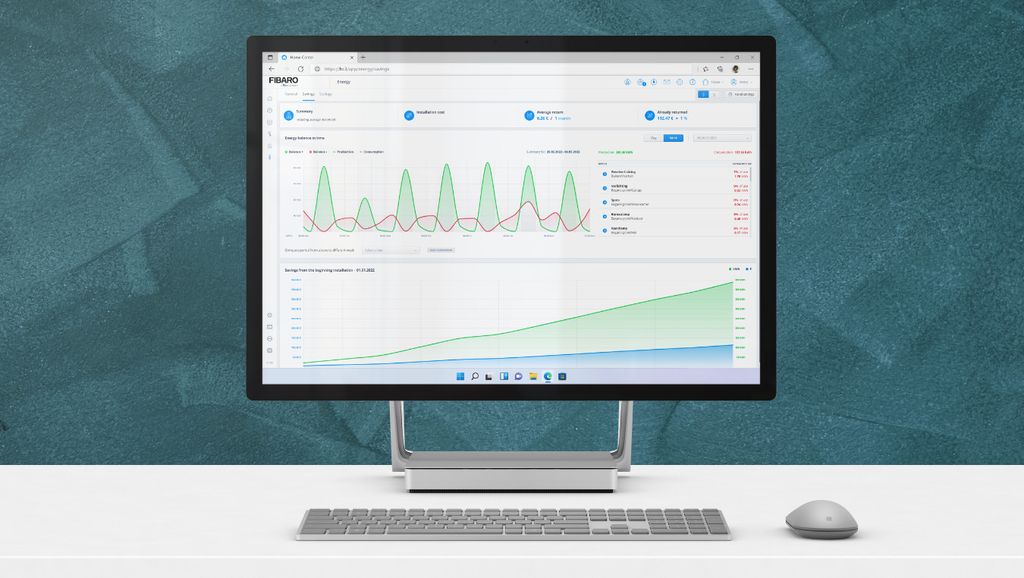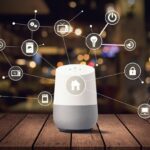In the rapidly evolving landscape of smart home technology, home automation systems have emerged as the backbone of modern living. These systems offer unparalleled convenience, security, and energy efficiency by integrating various devices and technologies within the home. As the demand for smart homes continues to rise, choosing the best home automation system becomes a crucial decision for homeowners. In this article, we will explore the top contenders in the market, each offering unique features and capabilities.
Key Takeaways
- Amazon Alexa stands out as a frontrunner in the home automation arena.
- Google Home offers a seamless integration with other Google services and devices.
- Apple HomeKit provides a secure and privacy-focused ecosystem for Apple users.
- Samsung SmartThings offers a wide range of compatibility with third-party devices.
- Hubitat Elevation is a local-based automation system that prioritizes privacy and offline functionality.
What is Home Automation?

Benefits of Home Automation
Home automation offers numerous benefits for homeowners seeking a convenient, efficient, and secure living space. Firstly, it provides convenience by allowing homeowners to control multiple devices through a single interface. This means being able to turn off lights, adjust thermostats, or lock doors from anywhere in the world with just a few taps on a smartphone. Secondly, home automation improves energy efficiency. By automating energy-consuming devices such as thermostats and lighting systems, homeowners can optimize their energy usage based on occupancy or schedule preferences. This not only reduces energy waste but also leads to cost savings on utility bills. Additionally, home automation enhances security measures. Integrated systems can provide features such as smart locks, surveillance cameras, and motion sensors that allow homeowners to monitor and protect their living space more effectively. With home automation, homeowners can create a personalized, comfortable living environment tailored to their preferences. By controlling various aspects of their home, from lighting and temperature to security and entertainment, they can effortlessly enhance their daily living experience. Embracing the power of home automation not only improves convenience and energy efficiency but also enhances the overall quality of life for homeowners.
Popular Home Automation Systems
As the demand for smart homes continues to rise, choosing the best home automation system becomes a crucial decision for homeowners. In this article, we will explore the top contenders in the market, each offering unique features and capabilities.
-
Amazon Alexa: Amazon Alexa stands out as a frontrunner in the home automation arena. This voice-activated virtual assistant seamlessly integrates with a wide range of smart devices, allowing users to control systems with automation. Control everything comfortably, from music to streaming services, ensuring a pleasurable experience for you and your guests.
-
Google Home: Google Home is another popular choice for home automation. With its built-in Google Assistant, it offers similar functionalities to Amazon Alexa. Users can control smart devices, ask questions, and even get personalized recommendations.
-
Apple HomeKit: Apple HomeKit is designed specifically for Apple users. It provides a secure and private way to control smart devices using Siri voice commands or the Apple Home app. It also offers advanced automation features and compatibility with a wide range of smart devices.
-
Samsung SmartThings: Samsung SmartThings is a versatile home automation system that supports a wide range of smart devices, including Samsung’s own products as well as third-party devices. It offers a user-friendly interface and allows for complex automation scenarios.
-
Hubitat Elevation: Hubitat Elevation is a local home automation hub that offers privacy and reliability. It operates offline and does not rely on cloud services, ensuring that your data stays secure. It supports a wide range of smart devices and allows for advanced customization and automation.
These are just a few examples of popular home automation systems in the market. Each system has its own strengths and features, so it’s important to consider your specific needs and preferences when choosing the best one for your home.
Key Features to Consider
Connectivity Options: Look for systems that provide various connectivity options, such as Wi-Fi, Bluetooth, or Zigbee. This flexibility allows for easy integration with your existing devices.
Ease of Use: Opt for systems with intuitive interfaces and straightforward setup processes. The last thing you want is to spend hours configuring your smart home system when it should simplify your life.
Scalability: Consider your future needs and choose a system that is easily expandable. It should support additional devices and functionalities as you continue to automate your home.
Security Measures: Ensure that the smart home system you choose has robust security measures in place to protect your privacy and prevent unauthorized access.
Customer Support and Warranty: Check if the manufacturer or provider offers reliable customer support in case you encounter any issues. Additionally, a reasonable warranty provides peace of mind.
Integration with Smart Devices
Seamless integration with other devices: By connecting your smart home automation system to popular voice assistants like Amazon Alexa or Google Assistant, you can easily integrate it with other smart speakers, TVs, and entertainment systems in your home. This allows for a truly immersive and interconnected experience.
Voice recognition technology: With advanced voice recognition capabilities, your smart home system can understand and respond to your voice commands, making it even more convenient to control and manage your devices.
Accessibility and convenience: Smart home integration systems eliminate the need for physical interaction with devices or apps. This makes it extremely convenient for individuals with limited mobility or disabilities to manage their homes independently.
Energy efficiency: By integrating your smart home system with other compatible devices such as smart thermostats or lighting systems, you can create a seamlessly interconnected network that maximizes both comfort and energy efficiency in your home without any additional effort.
Security and Privacy Concerns
Privacy concerns also come into play with home automation technology since these systems collect data about user habits and preferences. It’s important to carefully review privacy policies and take appropriate measures to protect personal information from potential data breaches or unauthorized access. Additionally, reliance on technology means that disruptions in power supply or system failures could temporarily render automated features nonfunctional. It’s crucial to have contingency plans in place for such scenarios to ensure basic functionality remains accessible.
Cost of Home Automation Systems
When considering home automation systems, it’s important to factor in the cost. The price of these systems can vary depending on the brand, features, and level of integration. On average, a basic home automation system can cost around $1,000 to $3,000, while more advanced systems with extensive features can range from $5,000 to $10,000 or more. It’s essential to determine your budget and prioritize the features that are most important to you.
To help you understand the cost breakdown, here is a table comparing the prices of popular home automation systems:
| System | Price Range |
|---|---|
| System A | $1,000 – $2,000 |
| System B | $2,500 – $4,000 |
| System C | $5,000 – $7,000 |
Keep in mind that these prices are estimates and can vary depending on factors such as installation fees and additional components.
When investing in a home automation system, it’s important to consider the long-term benefits and potential cost savings. While the initial investment may seem high, these systems can help reduce energy consumption, enhance security, and increase the value of your home.
Installation and Setup Process
The installation and setup process of home automation systems can vary depending on the complexity of your desired setup. Some systems are designed for easy DIY installation, while others may require professional assistance, especially for more intricate solutions. Many smart home systems provide user-friendly interfaces and step-by-step instructions for setup and control, making it accessible to users with varying levels of technical knowledge. It is important to carefully follow the instructions provided by the manufacturer to ensure a successful installation.
When setting up a home automation system, it is recommended to start by connecting the system to your Wi-Fi network. This allows you to control your devices remotely and enables seamless communication between different smart devices. Once connected, you can proceed with adding and configuring individual devices, such as smart lights, thermostats, and security cameras. Some systems may also require additional steps, such as setting up automation rules or creating schedules for device control.
It is worth noting that compatibility issues between different smart devices from various manufacturers can sometimes arise. Ensuring seamless communication and integration between different devices may require additional troubleshooting and configuration. Additionally, privacy concerns should be taken into consideration when setting up a home automation system. It is important to review the privacy policies of the system and devices being used to understand how data about user habits and preferences is collected and used.
Overall, the installation and setup process of home automation systems can be straightforward with the right guidance and instructions. By following the recommended steps and considering compatibility and privacy concerns, users can enjoy the benefits of a smart home with ease.
Future Trends in Home Automation
As technology continues to advance, the future of home automation looks promising with the integration of voice assistants and artificial intelligence. These innovative solutions are revolutionizing the way we interact with our homes and manage energy consumption. Incorporating smart speakers, plugs, appliances, and blinds into your home automation setup can greatly enhance convenience and efficiency while transforming your living space into an intelligently connected environment. Here are some future trends to watch out for:
-
Voice assistants: Voice-activated assistants like Amazon Alexa and Google Assistant are becoming increasingly popular in smart homes. They allow users to control various devices and systems using voice commands, making it easier to manage tasks and access information.
-
Artificial intelligence: AI-powered automation systems can learn from user behavior and adapt to their preferences over time. These systems can anticipate user needs, optimize energy consumption, and provide personalized recommendations.
-
Energy management: Smart home automation systems can help homeowners monitor and manage their energy usage more efficiently. By integrating energy monitoring devices and smart thermostats, users can track their energy consumption, identify energy-saving opportunities, and reduce their carbon footprint.
-
Enhanced security: Home automation systems are increasingly incorporating advanced security features like facial recognition, smart locks, and surveillance cameras. These features provide homeowners with enhanced protection and peace of mind.
-
Integration with IoT devices: The Internet of Things (IoT) is expanding rapidly, and home automation systems are integrating with a wide range of IoT devices. This allows for seamless communication and control between different devices, creating a more connected and integrated smart home ecosystem.
-
Personalization and customization: Home automation systems are becoming more customizable, allowing users to personalize their smart home experience. From setting custom lighting scenes to creating personalized routines, users can tailor their automation systems to their specific needs and preferences.
-
Health and wellness integration: Smart home automation systems are starting to integrate with health and wellness devices, such as fitness trackers and sleep monitors. This integration allows users to track and manage their health metrics within their smart home environment.
-
Sustainability and eco-friendly features: With a growing focus on sustainability, home automation systems are incorporating eco-friendly features. This includes energy-efficient devices, smart irrigation systems, and automated waste management systems.
The future of home automation is exciting, with advancements in technology and the increasing demand for smart home solutions. These trends will continue to shape the way we live and interact with our homes, making them more convenient, efficient, and secure.
Conclusion
In conclusion, home automation systems have revolutionized the way we live by offering unparalleled convenience, security, and energy efficiency. The top contenders in the market, such as Amazon Alexa, Google Home, Apple HomeKit, Samsung SmartThings, and Hubitat Elevation, each offer unique features and capabilities. Whether you prioritize voice control, ecosystem integration, or data privacy, these systems have the potential to transform your living space into an intelligent haven where everything is at your fingertips. Investing in a home automation system is a step towards a more convenient, secure, and efficient lifestyle.
Frequently Asked Questions
What is home automation?
Home automation refers to the use of technology to control and automate various devices and systems within a home, such as lighting, heating, security, and entertainment.
What are the benefits of home automation?
Some benefits of home automation include increased convenience, energy efficiency, security, and the ability to control devices remotely.
What are some popular home automation systems?
Some popular home automation systems include Amazon Alexa, Google Home, Apple HomeKit, Samsung SmartThings, and Hubitat Elevation.
What key features should I consider when choosing a home automation system?
When choosing a home automation system, consider factors like compatibility with your existing devices, ease of use, available features, and integration with other smart devices.
Are there any security and privacy concerns with home automation systems?
Security and privacy concerns with home automation systems include the potential for hacking, data breaches, and unauthorized access to personal information.
How much does a home automation system cost?
The cost of a home automation system can vary depending on factors like the size of your home, the number of devices you want to automate, and the complexity of the system. It can range from a few hundred dollars to several thousand dollars.




